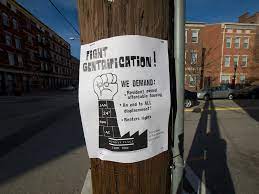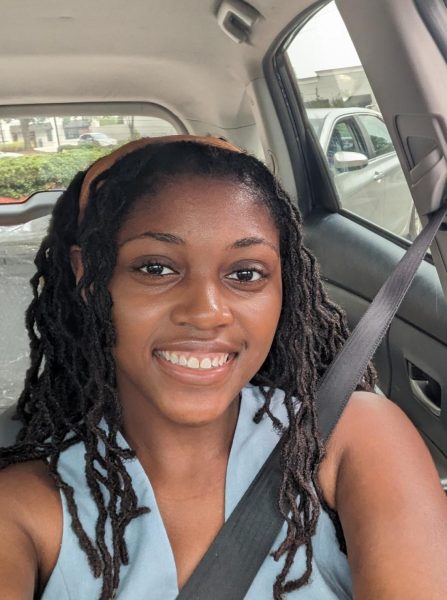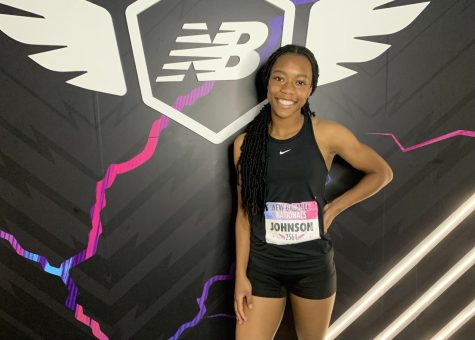The Rise of Gentrification in South Park

Houses in South Park are selling in days, or even hours, due to the influx of people trying to move to the Raleigh area. Due to its central location in downtown, the neighborhood is attractive to newcomers.
April 22, 2022
Gentrification in Raleigh
Take a drive through the South Park neighborhood, which is located in downtown Raleigh. It is about a four-minute drive away from Marbles Kid Museum, eight minutes away from North Carolina State University, and within walking distance of Nash Square. The neighborhood is known for John Chavis Memorial Park, Shaw University, and its years-old history. The neighborhood was developed after the Civil War, attracting African-American people due to its central location to Second Baptist Church (now Tupper Memorial) and Shaw University. In the past, the small plots of land were filled with shotgun homes and triple-A cottages. Playgrounds would be made up of swing sets, basketball hoops with no nets, and benches that sit on the sidewalk with no shade. As the years progressed, small family-run drug and grocery stores popped up on street corners, daycares, laundromats, and ABC stores filled up the blocks. Plots of land were dedicated to industrial products, which brought industry and jobs to the community, years later leaving behind only large empty plots of concrete-covered land only distinguished by graffiti and grass growing up through the cracks blocked off by chain link fences.
Keeping this description in mind, a visitor today might think they got the wrong directions if they were to drive through South Park. Modern houses take up small plots of land, a newly remodeled house with a Tesla parked out front to their left and a boarded-up house with a caving-in porch to the right. Every couple blocks there is a brand-new playground filled with bright colored-equipment such as neon orange slides, forest green swing sets, and fire engine red seesaws. The roads are newly paved, the houses have a fresh coat of paint on them, and the cars are all new and shiny. The starkest difference, however, can be seen in the residents.
The shift in the physical appearance of Raleigh’s South Park neighborhood is paired with a rush of white homeowners. In 2000, white residents were all but non-existent in the neighborhood. While the neighborhood served as a large cultural center for African Americans in downtown Raleigh, it also was neglected by the city. The infrastructure of the neighborhood was allowed to deteriorate as money was invested into areas such as Historic Oakwood, just a few blocks north, or Nash Square. By 2012, white people made up 17 percent of the population and accounted for about nine out of every ten new mortgages, or an overall 86 percent. Not only are the newcomers changing the physical makeup of the neighborhood, but the land is also becoming more valuable as they come.
Much of the housing in the neighborhood has been demolished in favor of mixed-income housing. Part of the criticism against the new housing developments center around the fact that while they raise property values and earn the city more in property taxes. They also disproportionately raise taxes for old residents who live in nearby homes that do not compare to the modern new developments nor do these residents earn enough to comfortably accommodate this rise in expenses. Therefore, while they bring in new residents, they also drive out old residents who are no longer able to afford to live in the area.
Beloved Chavis Park has also been affected by this change. For years, the city of Raleigh let the park deteriorate in favor of other projects, allowing the facilities to age and the park became far less alluring than other parks in the area. Coinciding with the influx of new, largely white middle class residents, money began being dedicated to revitalizing the park. In 2012, the Chavis Park Carousel reopened, and the Chavis Park Conservation Committee was formed to create a master plan for the park. By 2017 a master plan had been adopted and a schematic design was approved by the city council. On June 21, 2021, the refurbished park opened to the public.
Part of this gentrification process has been sped up by the movement of people from Northern areas such as New York to North Carolina. Raleigh is the second fastest growing large metro in the United States, and as such, housing prices in the city are rising dramatically. For those moving from cities such as New York, the average sale price of a home is 750,000 dollars. When these prospective residents bid on homes in North Carolina, they are able to use these funds to outbid members of the community. They then have enough money left over to entirely remodel the homes.
With the trend in the neighborhood, developers too are contributing to the gentrification of Raleigh’s oldest historically black neighborhood. When driving through the neighborhood today, multiple empty lots can be seen with the name of developers on small signs in the front yard or buildings already halfway under construction with developer’s smiling faces hanging on the fences blocking off the work area.
While the gentrification of the neighborhood ultimately helps the city in terms of revenue, the impact and harm it has on residents cannot be ignored. The long-time residents feel ignored and marginalized by the city. A similar refrain among them: “I can’t afford to live in the neighborhood I grew up in.” This causes individuals to be forced out in search of cheaper housing. This is becoming increasingly difficult.
Of the new residents, a portion of them state that they want to move into a culturally diverse neighborhood, believing that it will benefit them and their families. While this is legitimate and an important part of the conversation, others question whether this is enough of a reason to push black residents out of the neighborhood. Mr. Cope, the IB Social & Cultural Anthropology teacher, had this to say: “You’re going to look at statistics and you’re going to look at large numbers… and I think the important part to remember is that these are people’s communities that are being gentrified. These are individual humans and individual families that we need to understand before we start looking at it as a larger process.”
What is Gentrification?
Gentrification is a harmful action that began in the 1960s and is still prevalent to this day. What is gentrification? Millbrook history teacher Mr. Lawless defines gentrification as: “More affluent people move into traditionally poor areas, downtown, where land prices are cheaper and then they renovate those places and drive out the population living there because they can no longer afford to live there.” Gentrification has been a problem all over big cities and is making its way to Raleigh. Gentrification affects many communities in positive and negative ways. Mr. Lawless expanded this, saying: “Gentrification has its pros and cons, it takes communities and areas and increases their property value and business and takes run down places and makes them better. But, people who can no longer afford to live in these places get pushed out, so it displaces poor people which are often people of color.”
Gentrification affects all people and has negative and positive outcomes. Mr. Lawless also says, “It affects different groups of people differently. People who have been there in the homes are now pushed further out and get dispersed into communities and broken apart but on the other hand, cities like it because it increases the tax value. Areas are also becoming more valuable so the local government gets more money from taxes.”
Many people are pro-gentrification, meaning they believe that cities should be renovated and newer; while others are anti-gentrification because they believe that it is wrong for families to get pushed out of their community, and has a disproportionately negative effect on African American communities.












